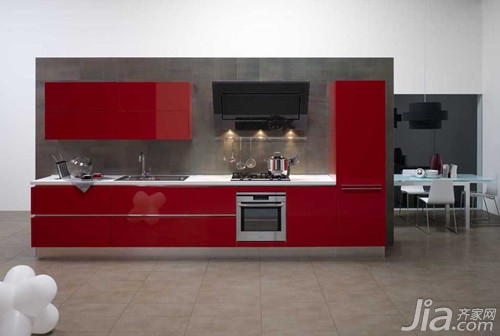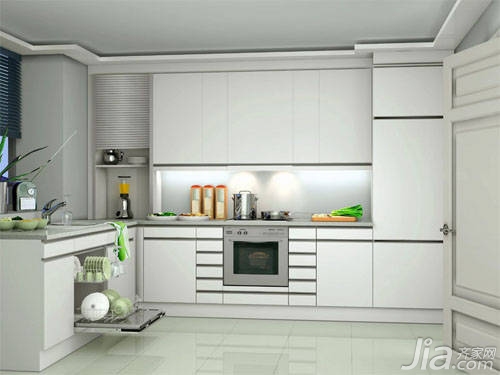We have learned about the processing of cabinets . How is the processing of cabinets processed during cabinet processing? How do you grasp the quality? Today, with a small series to specifically understand the cabinet processing technology, so that everyone has a understanding and reference when buying cabinets.

Cabinet processing - the first generation of processing technology:
Plate:
The first-generation cabinets are mainly made of large core boards and density boards, and they are affixed with white fireproof boards (with adhesive or white latex) on one side. With the advent of the era of environmental protection, Daxin board gradually exits the large stage of the cabinet, replacing it with more environmentally friendly moisture-proof plates and particleboards (note: unqualified moisture-proof plates add more adhesive than the large-core plates) due to the humid weather in the south In less than one year (in coastal areas), the MDF will expand and mold, so it automatically exits the range of cabinet panels.
Edge:
Manually brush the surface of the board section and the edge band with all-purpose adhesive, (the thickness of the edge band is generally between 0.3-0.45mm), and after drying for a period of time, fold the edge band and the plate body and press it tightly by hand. Then use Blades and other sharp tools artificial trimming. Generally, only the front face is visible, and the back and bottom sides are not sealed. This type of edge sealing is still used in a large number of cabinet factories. There are no shortage of "brand cabinets".
Assembly:
The first-generation cabinet assembly process can be referred to as the “straight-through-screw†era. Since the cabinet industry has just begun, a large number of businesses are eager to dismount. Therefore, professional equipment (row drilling) that requires capital and technology is rejected. So far, this kind of technology still occupies the mainstream position in the cabinet processing industry. The so-called "straight through the screws" as its name implies is the use of hand-held electric drill galvanized screws directly through the board body panel splicing assembly, simple, practical, low cost, no need to row drilling technology. The gall must be assembled in the factory. At the same time, in order to save the board, common cabinets are often made into a conjoined cabinet (two or more cabinets share one or more side panels). The back plate is nailed directly behind with a gun nail or nail. The simplest way to identify this process is to look at it (without professional knowledge). When the delivery is completed, you can see the cabinet. If the manufacturer will move one cupboard over, explain With the first-generation cabinet assembly process, if there is only one bag with a positioning hole, then it is a second-generation or third-generation cabinet assembly process.
Hanging code:
The first-generation craft hanging code generally uses a triangle hanging code, open the hanging cabinet can see the corner of the white iron sheet, generally brush the paint.
Backplane:
The backplane generally uses a 3mm single-sided Polaroid or MDF, and is nailed directly behind with a gun or nail.

Cabinet processing - the second generation of processing technology:
Plate:
The use of 16mm chipboard, at that time the big brands - including imported brand cabinets, all use this kind of plate as a board. However, the chipboard's waterproof capacity is poor, and many cabinets did not do the relevant waterproof protection at the time, causing the sink cabinet to collapse in advance. Replaced by the third generation plate ------ moisture-proof board.
Edge:
Hot melt machine edge sealing, manual trimming.
Assembly:
The second-generation cabinet assembly process is called the "drilling" era. The assembly of modern cabinets is connected by quick-loading parts. The hole drills are processed at the factory, after quality inspection, packaging, and then used in the installation site with three-in-one (eccentric key) assembly. Assembled into a unit cabinet, so when high-grade cabinets are delivered, you can't see the cabinet and only see one package.
Hanging code:
The main use of "L" shaped hole hanging yards looks good but the force is not good. Backplane: 3mm single-sided Polaroid or MDF, slotted installation.

Cabinet processing - the third generation of processing technology:
Plate:
Use 18 environmental moisture-proof boards;
Edge:
Automatic rubberizing, edge sealing, edge trimming, head breaking, polishing once in place, and edge stripping with crash bars;
Assembly:
On the basis of the second-generation cabinet assembly process, plus wooden mallet reinforcement;
Hanging code:
Use hanging or concealed hanging codes;
Backplane:
Double sided hydrogen amine density board, slotted installation;
waterproof:
Sink cabinet aluminum foil waterproof (a silver aluminum plate);
Countertop processing:
The surface processing must be lapped and polished by cutting board bonding. Among them, the bonding process is more critical. If there is a slight carelessness, the unsightly glue line will be exposed. Once again, it is polished, which determines the finish of the countertop—it is not bright. This is the trick. Then there is polishing, which is the polishing wax. The good wax can make the table brighter and brighter. Perfunctory behavior. Table surface water must have a water line process, under the table should be padding.

The relevant information about cabinet processing was introduced here for everyone. I hope this article will be helpful to everyone. If you still have something you don't understand, you can leave a message to Xiaobian at the bottom. We will answer your questions as soon as possible.
Kitchen Cabinets Kitchen Cabinets Custom Cabinets
Product Description
PVDF rod with 20-150mm diameter
Description
PVDF has high strength, super chemical resistance, high temperature resistance, UV resistance. What's more, its dielectrical property is also very good. Compared with PTFE, it has higher surface hardness. The global production capacity of PVDF is only next to PTFE in the fluoropolymer family
Characteristics
-Excellent chemical resistance
-High toughness and rigidity
-Good dielectrical properties
-Good UV and radiation resistance
-Easy to machine
-Good sliding resistance,
-High wear resistance
-Nice dimensional stability
Applications
Silicon chip carrier
PVDF nozzle
Technical Data Sheet
PROPERTIES Test Method Unit Value
I.Physical Properties
Density ISO 1183 g/cm3 1.8
Water absorption 24hrs ISO 62 % <0.05
II.Thermal Properties
Heat deflection temperature - HDT/A ISO 75-2 ºC 104
Min. service temperature ºC -40
Max. service temperature-Long Term ºC 150
Thermal conductivity at 23 ºC DIN 11359 W/(K*m) 0.13
Coefficient of linear thermal expansion ISO 11359 10-4*K-1 0.2
Flammability Rating(6mm thickness) UL 94 - V-0
III.Mechanical Properties at 23ºC
Tensile strength at yield ISO 527-2 MPa 50
Tensile strength at break ISO 527-2 Mpa 46
Elongation at break ISO 527-2 % ≥50
Modulus of elasticity after tensile test ISO 527-2 MPa 2,000
Modulus of elasticity after flexural test ISO 178 MPa 2,000
Hardness - Shore D DIN 53505 78
Charpy impact strength ISO 179 kJ/m2 N. B.
Friction coefficient DIN 53375 0.33
IV.Electrical Properties at 23ºC
Dielectric constant at 1 MHz IEC 60250 106Hz 7.25
Dielectric loss factor at 1 MHz IEC 60250 106Hz 0.18
Volume resistively IEC 60093 Ohm (Ω) * cm ≥1013
Surface resisively IEC 60093 Ohm (Ω) ≥1014
Dielectric strength IEC 60243-1 kV/mm 22
NOTE: 1 g/cm3 = 1,000 kg/m3, 1 Mpa = 1 N/mm2, 1kV/mm = 1 MV/m
Statement:
Property data contained herein are typical values of resin for your reference and comparison purposes only. PRIOR will not provide any legally binding guarantee of certain properties, or any suitability.
Engineering Plastics Products,Engineering Plastics,Engineered Plastics
ZHENJIANG CHUNHUAN SEALING MATERIALS CO.,LTD(GROUP) , https://www.chsealing.com
